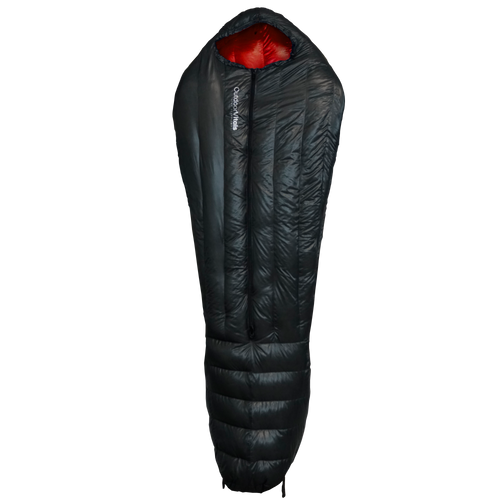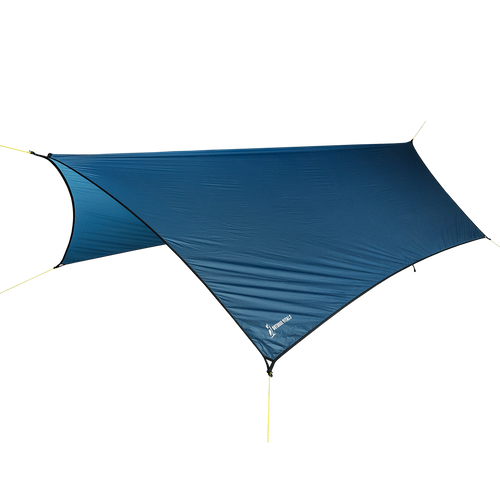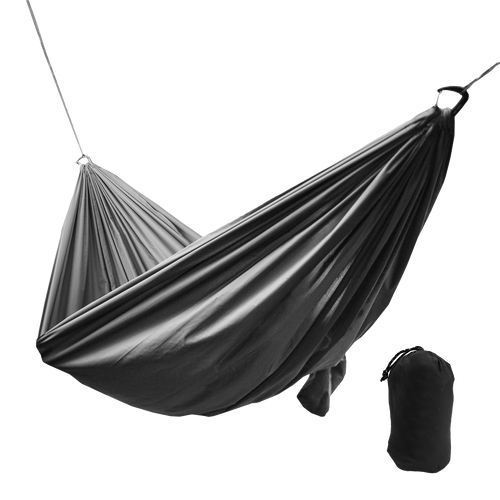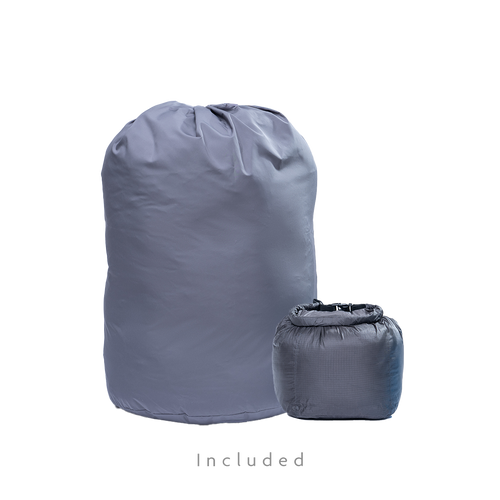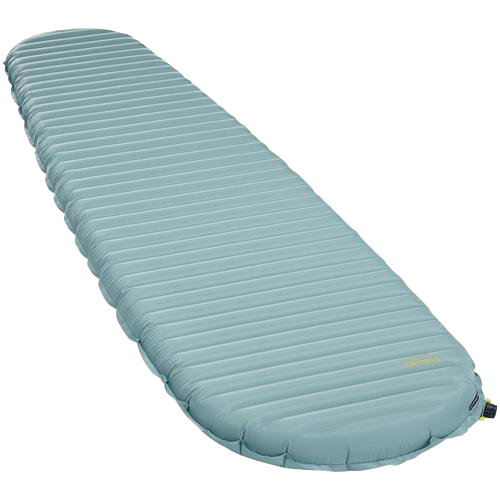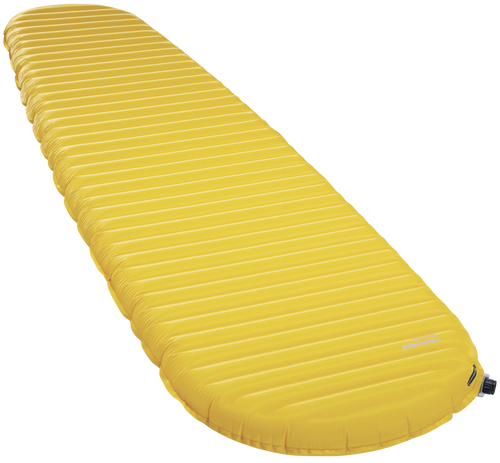3 Things You Didn't Know About Your Ultralight Rain Jacket
Everyone loves rain jackets & staying dry. But what you may not realize is that there are 3 HIGHLY important elements of a good rain jacket that lead either to a great rain jacket or a terrible one. Rain jackets are widely misunderstood.
By figuring these 3 things out, you'll be able to make sure the rain jacket in your pack is one you can actually count on when it matters most!
Let's dive in to what these 3 things are:
1. DWR Treatments Wears Off
In most rain jackets, the first line of defense from moisture is the DWR treatment on the outside of the fabric. DWR (or Durable Water Repellent) is a substance sprayed on or applied to the outer fabric of rain jackets to chemically drive away water. Water will basically try to get away from the DWR treatment as much as possible.
When you see water bouncing off of, or beading up and rolling down your jacket, that's the DWR treatment doing its job.
However, what most people may not know is that this treatment is NOT permanent.
It was never meant to be. That’s just physics.
Think of a DWR treatment like a layer of sunscreen that you’ve put on while at the beach. Over time, that sunscreen wears away or washes off, and you’re going to get burned unless you have a backup plan.
When it comes to rain jackets, the issue is that many rain jackets rely HEAVILY on that non-permanent DWR treatment. So once that fails (because it eventually will, especially in high pressure areas like where a backpack or shoulder straps sit), there isn’t much of a backup plan to keep you dry.
You need to know how much your rain jacket relies on that DWR treatment.
To ensure you’ve got a great rain jacket you can trust, it’ll need to have what is probably the most important barrier between you and the weather: the waterproof membrane.
Which leads me to the 2nd thing you probably didn’t know about rain jackets!
2. Not All Waterproof Membranes Are The Same
So what is a membrane?
In rain jackets, a waterproof membrane is a super thin, super lightweight barrier that prevents liquid moisture from getting through. Unlike DWR treatments, membranes are permanent. They aren’t like a thin layer of fabric, but are more like paint you put on a wall, or a lamination. These membranes are typically porous and enable vapor to pass through - which is the definition of breathable.
What some people may not understand is that there are different types of membranes that function totally differently: hydrophobic & hydrophilic.
Hydrophobic Waterproof Membranes
Hydrophobic membranes are awesome. They don’t absorb water, & they don’t let it pass through.
The only moisture that gets through them is in vapor form, which is great, because you really want your rain jacket to be somewhat breathable as well.
The only downside is that they are not as breathable as a hydrophilic waterproof membrane, but only in some cases!
You see, a hydrophilic membrane is more breathable than a hydrophobic membrane at first, but loses breathability if it absorbs water.
Hydrophilic Waterproof Membranes
Hydrophilic membranes absorb water.
I know, this may seem counterintuitive for something waterproof, but it’s true.
When a DWR treatment is in tact, hydrophilic membranes are excellent for breathability. The way they work is by what's called the "pressure differential."
Basically that means that when the heat & humidity from your body is higher than the outer side of the hydrophilic membrane, it will more or less suck that humidity and vapor through the membrane and evaporate it.
Without a functioning DWR treatment, hydrophilic membranes absorb water and swell, or saturates the membrane. It’s like shutting off a valve. Once the membrane has become saturated, vapor can no longer pass through & your rain jacket will not be able to breathe.
Once the membrane has “wetted out” or absorbed moisture until it’s full, you’ll feel like that moisture is on your skin because the membrane is so thin! You won’t actually be wet from outside moisture, but it will sure feel like it!
The other side effect of a non breathable rain jacket that uses a hydrophilic membrane is that moisture from your body (sweat, regular evaporation, etc.) won’t be able to escape, causing discomfort & possible damage to the inside of your rain jacket.
Which leads us to the 3rd thing you may not have thought about when it comes to rain jackets!
3. Rain Jackets Must Handle Internal Microenvironments
We all know that rain jackets are meant to protect us from the rain. But a rain jacket also has to protect itself from us if we want it to last!
As we move our bodies generate heat, & increased amounts of moisture - especially in the form of sweat. Little microenvironments are created inside our jackets that are extremely humid. Not only is this microenvironment hot & muggy, but it’s extremely saline from all the salt in our sweat!
By nature heat from your body tries to go to places that have less heat. That’s how your wet shirt can dry fairly quickly even on a cloudy day.
But that can wreak HAVOC on your rain jacket!
Think about it: all that humid, sweaty moisture trying to push its way through the seam tape, membranes, & seams on the inside of your jacket. That saline moisture can chemically do a lot of harm to the internal materials of your rain jacket (ESPECIALLY the seam tape) & cause it to eventually fall apart or lose its ability to perform correctly.
So you’re really going to want to make sure that your rain jacket is built well enough not only to withstand the weather outside, but also to handle the microenvironment you create inside!
Many companies & fabric manufacturers create tests & simulations to mimic the hot, saline microenvironments we create. These simulations can be accelerated so that in the course of 10 weeks, we would know how well the tested rain jacket would hold up over the course of 10 years.
If you want a jacket that lasts, make sure it’s a jacket that has been able to pass these tests!
Bringing It All Together
To recap, the best rain jackets are ones that don’t rely primarily on a DWR treatment. All rain jackets will have one, but the real magic in a rain jacket’s design should be in the membrane (or combination of membranes) being used.
The membranes should be breathable enough to help manage the rough microenvironments created by our bodies, but waterproof without feeling clammy & uncomfortable.
A combo of hydrophobic membranes & hydrophilic membranes is one option for a really great jacket!
Beyond just having a great membrane or combo of membranes, a great rain jacket should also be built well enough to not fall apart because of that internal microenvironment we keep bringing up! Seam tapes or seals, membranes, fabrics, and materials should all be just as durable on the inside as they are on the outside.
Outdoor Vitals Tushar Rain Jacket

We’ve been developing a jacket that addresses all of these concerns! It was built to last while only weighing a few ounces and allowing you to breathe & stay dry.
It’s a jacket that you can literally wear all day with total confidence!
We value the knowledge we gain & are able to share by using all our gear ourselves, & are often out on the trail testing products. Sometimes this means we are in some pretty brutal weather.
To us, a rain jacket needs to be able to handle all-day bad weather, not just a 30 minute rain shower. It needs to breathe, not be so thin that we worry about tearing it on hikes, but also not weigh a lot.
So we went ahead & built one that can do that!
The Tushar Rain Jacket is durable, breathable, ultralight, & built to last!
Click Here to learn more about the Tushar Rain Jacket for yourself.
1 comment
Interesting’

